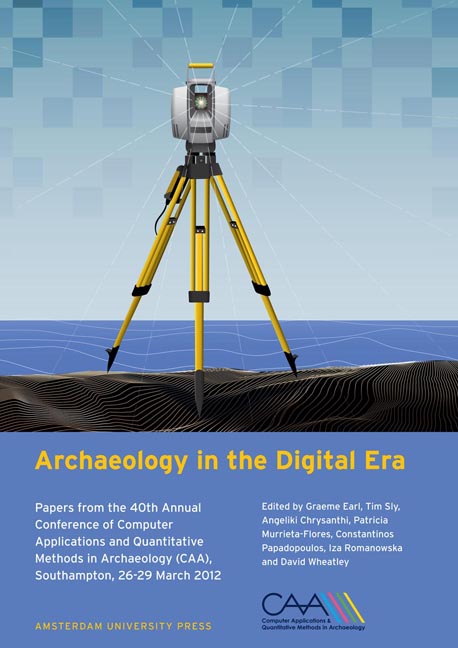 Archaeology in the Digital Era
Archaeology in the Digital Era Introducing the Human Factor in Predictive Modelling: a Work in Progress
Published online by Cambridge University Press: 16 February 2021
Summary
Abstract:
In this paper we present the results of a study aiming at integrating socio-cultural factors into predictive modelling. So far, predictive modelling has largely neglected the social and cultural dimensions of past landscapes. To maintain its value for archaeological research, therefore, it needs new methodologies, concepts and theories. For this study, we have departedfrom the methodology developed in the 1990s during the Archaeomedes Project. In this project, cross-regional comparisons of settlement location factors were made by analyzing the environmental context of Roman settlements in the French Rhone Valley. For the current research, we expanded the set of variables with ‘socio-cultural’factors, in particular accessibility, visibility, and the effect of previous occupation, and created predictive models from this. In this way, we have developed a protocol for predictive modelling using both environmental and socio-cultural factors that can easily be implemented for different regions and time periods.
Keywords:
Predictive Modelling, Socio-Cultural Factors, Regional Comparison, Diachronic Comparison, Roman Period
Introduction
Archaeological predictive modelling has a long history of application, especially in cultural resources management (see Judge and Sebastian 1988; Verhagen 2007; Kamermans et al. 2009). Despite its popularity for archaeological heritage management, it has also been the subject of substantial criticism from academic researchers (van Leusen 1996; Wheatley 2004; van Leusen and Kamermans 2005: Kamermans 2007). The goals of predictive modelling in heritage management are the accurate and cost-effective prediction of the location of archaeological remains within a limited region. However, academic researchers are usually more interested in finding explanations of why archaeological remains are concentrated in particular parts of the landscape. Predictive modelling can be used as a tool for this purpose as well, but should be used with caution. Little attention is paid to the role of socio-cultural factors in prehistoric and historical site location choice (Verhagen et al. 2010). The result is a rather static way of modelling, in which the human factor remains unexplored. Furthermore, issues of temporality have been addressed uncritically or insufficiently. To maintain its value for archaeological research, therefore, predictive modelling needs new methodologies, concepts and theories.
- Type
- Chapter
- Information
- Archaeology in the Digital EraPapers from the 40th Annual Conference of Computer Applications and Quantitative Methods in Archaeology (CAA), Southampton, 26-29 March 2012, pp. 379 - 388Publisher: Amsterdam University PressPrint publication year: 2014


